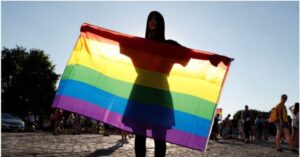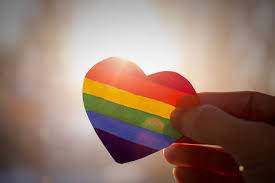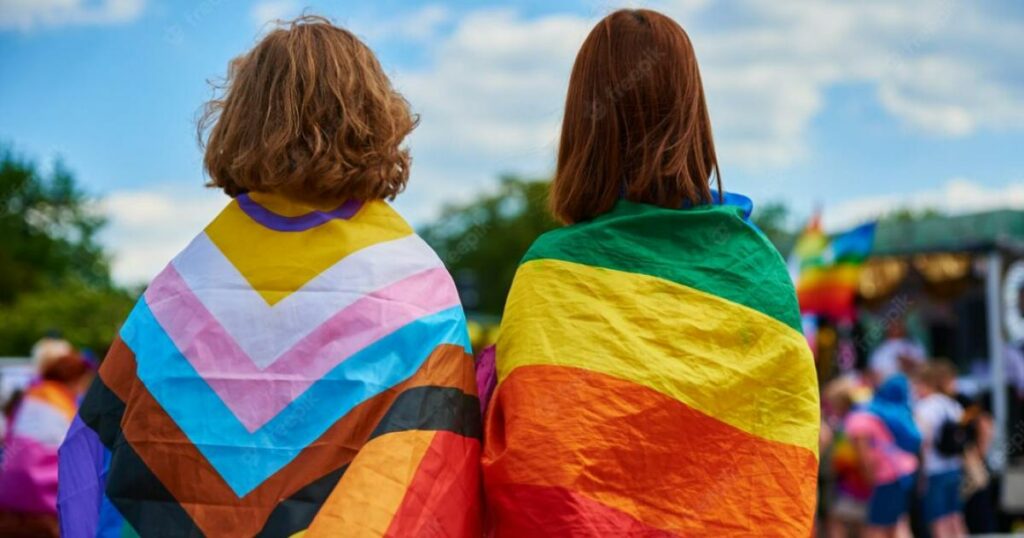In the vibrant tapestry of humanity, there is a broad spectrum of experiences, identities, and expressions that add depth, variety, and beauty to our world. Among them are the experiences of lesbian, gay, bisexual, and transgender (LGBT+) individuals. While society has made significant strides in recognizing and advocating for the rights and equality of the LGBT+ community, there are still manifold challenges and social issues that persist. This blog delves into these critical LGBT social issues, and ongoing battles faced by the LGBT+ community. Our aim is to promote understanding, encourage conversation, and inspire positive action toward a more inclusive and equitable world.
Contents
Understanding LGBT+ Identities
 The acronym LGBT+ stands for Lesbian, Gay, Bisexual, and Transgender, with the “+” representing a myriad of other identities that fall under this umbrella. That might include queer, intersex, asexual, and many more. These labels represent aspects of a person’s sexual orientation, referring to whom they are attracted to, and gender identity. And that is a personal internal sense of one’s own gender. A lesbian is a woman who is attracted to other women. And a gay man is attracted to other men.
The acronym LGBT+ stands for Lesbian, Gay, Bisexual, and Transgender, with the “+” representing a myriad of other identities that fall under this umbrella. That might include queer, intersex, asexual, and many more. These labels represent aspects of a person’s sexual orientation, referring to whom they are attracted to, and gender identity. And that is a personal internal sense of one’s own gender. A lesbian is a woman who is attracted to other women. And a gay man is attracted to other men.
Bisexual individuals are attracted to both men and women. And transgender people identify with a gender different from the one assigned to them at birth. These identities are part of the diverse spectrum of human experience, each with its unique realities and perspectives. But all share the common quest for recognition, understanding, and equality.
Common LGBT Social Issues
In the rich spectrum of human experiences and identities that make up our world, the challenges and social issues faced by the LGBT+ community hold unique significance. Below are some common LGBT social issues that you must be aware of:
Discrimination and Violence
Many LGBT+ individuals are subjected to discrimination and violence based on their sexual orientation or gender identity. Discrimination can take many forms, from social exclusion and workplace bias to denial of healthcare services. Hate crimes, including physical assault, sexual violence, and murder, are serious threats faced by the community. Moreover, some countries still criminalize same-sex relationships, which exacerbates discrimination and violence.
Mental Health Challenges
The mental health of LGBT+ individuals is often negatively impacted by the societal discrimination, stigma, and lack of acceptance they face. For example, rates of depression, anxiety, and suicidal ideation are significantly higher among LGBT+ people compared to the general population. These mental health issues often arise from the stresses of living in a society that may not fully accept or understand their identities.
Healthcare Disparities
Access to quality healthcare is a critical issue for the LGBT+ community. Many healthcare providers lack the knowledge and sensitivity necessary to care for LGBT+ patients effectively. Transgender individuals in particular often face obstacles in obtaining gender-affirming care, such as hormonal treatments or surgeries. Further, some LGBT+ individuals may avoid seeking healthcare for fear of encountering discriminatory behavior.
Rights and Legal Recognition
Despite progress in some regions, many countries around the world do not grant equal rights to LGBT+ individuals. This inequality can extend to marriage laws, adoption rights, protections against workplace discrimination, and more. Transgender individuals may also struggle with legal recognition of their gender identity, affecting their ability to obtain accurate identification documents or access gender-segregated spaces.
Social Acceptance
 Acceptance in society plays a major role in the mental and emotional well-being of LGBT+ individuals. When people are accepted by their families, friends, workplaces, and broader communities, they’re more likely to thrive. However, societal norms, religious beliefs, and misinformation about LGBT+ identities often contribute to a lack of acceptance. This rejection can lead to isolation, discrimination, and mental health challenges.
Acceptance in society plays a major role in the mental and emotional well-being of LGBT+ individuals. When people are accepted by their families, friends, workplaces, and broader communities, they’re more likely to thrive. However, societal norms, religious beliefs, and misinformation about LGBT+ identities often contribute to a lack of acceptance. This rejection can lead to isolation, discrimination, and mental health challenges.
Education and Bullying
In schools across the globe, LGBT+ students are frequently subjected to bullying and discrimination, which can impact their academic performance, mental health, and overall well-being. Some educators may lack the necessary training to support LGBT+ students, and curricula often exclude information about sexual orientation and gender identity. In addition, comprehensive and inclusive sex education that recognizes and respects LGBT+ experiences is often lacking, leaving many young people without critical knowledge about their own health and relationships.
Homelessness
Due to factors like family rejection and discrimination, LGBT+ youth are at a significantly higher risk of experiencing homelessness compared to their heterosexual and cisgender peers. Once homeless, they often face further hardships, including a higher risk of physical and sexual violence, mental health issues, and substance use disorders. Furthermore, when seeking shelter or supportive services, they may encounter further discrimination or a lack of understanding about their needs.
Intersectionality
Intersectionality refers to the complex, cumulative manner in which the effects of different forms of discrimination overlap and intersect. LGBT+ individuals who also belong to other marginalized groups, such as racial and ethnic minorities, people with disabilities, or those living in poverty, face additional layers of discrimination and bias. For instance, a black transgender woman not only contends with transphobia but also racism and sexism, each compounding the others’ effects.
Aging and Elder Care
As they age, LGBT+ individuals face unique challenges. They may not have children to care for them due to societal restrictions on adoption. And alternative reproduction or as a result of personal choices. This can lead to increased isolation and lack of support. Additionally, many older LGBT+ individuals have lived through periods of intense discrimination and stigma. That can affect their mental health and willingness to seek care. Within the elder care system, there may be a lack of services tailored to the needs of LGBT+ seniors, and they may face discrimination or misunderstanding from care providers or fellow residents.
As society continues to evolve, it is our shared responsibility to address and advocate for the resolution of these pressing social issues. And eventually, striving towards a future where everyone, including the LGBT+ community, can live authentically. That too is with dignity, respect, and equal rights.
Strategies for Enhancing LGBT+ Inclusion and Equality
 The following are some strategies that can help to manage the LGBT social issues and promote equality:
The following are some strategies that can help to manage the LGBT social issues and promote equality:
- Promote Awareness and Education
Improving understanding of LGBT+ identities and experiences is crucial. This can involve implementing comprehensive and inclusive educational programs in schools, workplaces, and communities. That fosters understanding and dispel harmful myths and stereotypes.
- Implement Anti-Discrimination Policies
Governments, institutions, and organizations should adopt and enforce policies that protect LGBT+ individuals from discrimination in various areas. Including employment, healthcare, housing, and education.
- Legal Reforms
Advocating for changes in the law to recognize and protect the rights of all LGBT+ individuals is essential. This can include laws related to same-sex marriage, adoption, gender recognition, and protections against hate crimes.
- Support Mental Health
Providing adequate mental health resources that cater specifically to the needs of the LGBT+ community is critical. This can involve training mental health professionals in LGBT+ issues and increasing funding for services and resources.
- Promote Representation
Encouraging greater representation of LGBT+ individuals in media, politics, and other public spheres can help normalize. And validate the diverse range of human identities and experiences.
- Foster Safe Spaces
Creating safe spaces where LGBT+ individuals can express themselves without fear of judgment or harm, both online and offline, is important. This can include LGBT+-friendly schools, workplaces, community centers, and support groups.
- Encourage Allyship
Encouraging non-LGBT+ individuals to become allies can greatly enhance inclusion. Allies can use their positions to support LGBT+ rights, challenge discrimination, and spread awareness.
- Intersectional Approach
Recognize that LGBT+ individuals can also belong to other marginalized groups and ensure strategies for enhancing inclusion and equality address these intersectional identities.
Remember, it’s not only about tolerance, but also about understanding, acceptance, and celebrating diversity. Everyone has a part to play in enhancing LGBT+ inclusion and equality.
Conclusion
Navigating through the complexities and diversity of human experiences, it is clear that while we’ve made remarkable strides toward LGBT+ inclusion and equality, much work still remains. The LGBT social issues are deep-seated. And they call for a comprehensive, empathetic, and robust response from all levels of society. From legal reforms and policy changes to education and societal attitudes, each aspect demands our attention and action.
Every step forward, no matter how small, helps to forge a path towards a society where love is not legislated, identity is not policed, and everyone is free to be their authentic selves. Together, let’s create a world that truly embodies the spirit of the rainbow – diverse, vibrant, and unified.
Life may sometimes be challenging for people from LGBTQ community, but Online LGBTQ Counseling can help. Get experienced LGBTQ therapists at PrideMantra: Book a trial LGBTQ therapy session


